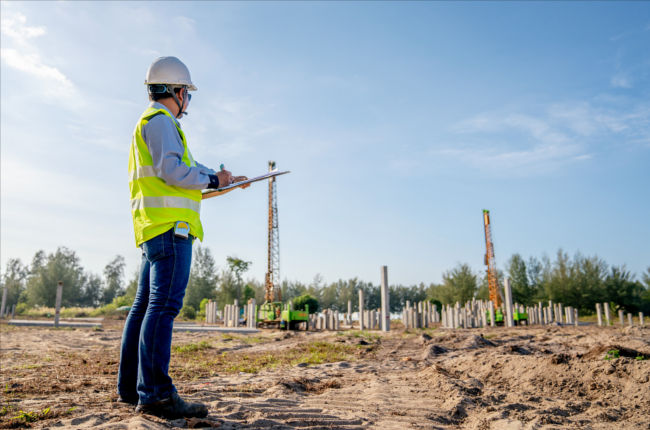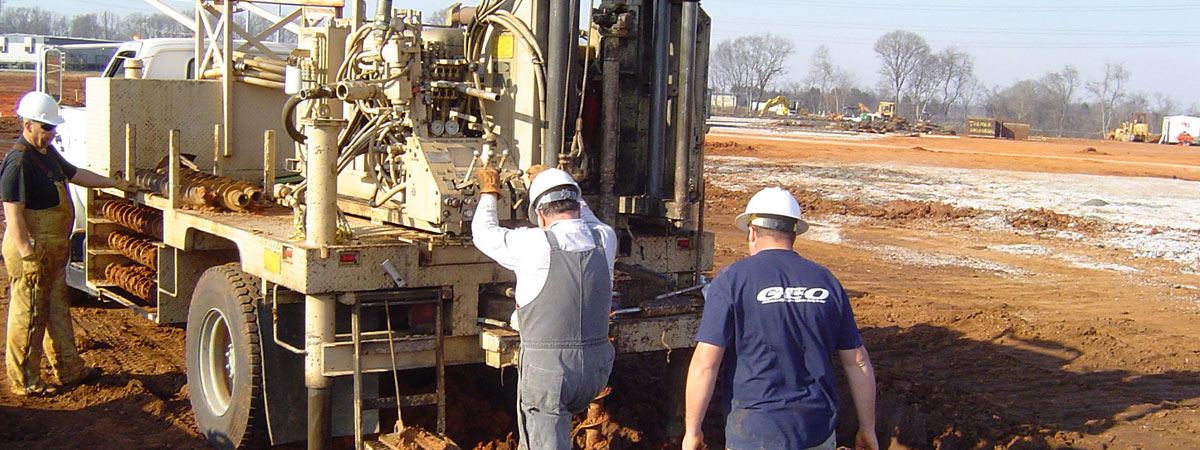Top Techniques for Geotechnical Engineers to Improve Soil Security in Building Projects
Wiki Article
The Interdisciplinary Approaches in the Geotechnical Industry: Connecting the Gap Between Engineering, Geology, and Environmental Scientific Research for Optimal Job Results
The combination of design, geology, and environmental science within the geotechnical market is not just advantageous; it is critical for accomplishing optimal task outcomes. This interdisciplinary partnership cultivates an extensive understanding of complicated website conditions, enabling for ingenious services to arise. By analyzing essential roles and effective instance studies, we can uncover the vibrant interaction that drives task success. Difficulties remain in effectively handling these multidisciplinary initiatives, increasing inquiries concerning future trends and possible developments. What methods might emerge to facilitate this essential partnership and enhance the efficiency of geotechnical practices?Importance of Interdisciplinary Collaboration
The relevance of interdisciplinary partnership in the geotechnical sector can not be overemphasized. Reliable geotechnical jobs need the integration of diverse experience from different fields, including engineering, geology, and environmental scientific research. This partnership makes sure that all aspects of a project are considered, leading to thorough options that resolve intricate challenges.Interdisciplinary partnership fosters advancement by making it possible for experts to share understandings and approaches that may not appear when working in seclusion (geotechnical engineers). By leveraging the staminas of multiple self-controls, teams can identify prospective risks, enhance style processes, and improve the sustainability of geotechnical tasks. Such collaboration promotes an alternative understanding of site-specific conditions, which is important for accurate analysis and decision-making.
The intricacy of geotechnical jobs necessitates a worked with approach to analytical. When engineers, geologists, and environmental scientists collaborate, they can develop a cohesive approach that aligns technical requirements with ecological factors to consider and regulative compliance. This harmony not only enhances project results yet also adds to the long-lasting strength of facilities. Ultimately, interdisciplinary collaboration is vital for progressing best methods and accomplishing excellence in the geotechnical sector.
Key Functions of Each Discipline
Collaboration amongst different disciplines is not just helpful; it is vital for the effective execution of geotechnical jobs. Each technique-- design, geology, and environmental scientific research-- plays a distinct yet interconnected role that adds to forecast efficacy and sustainability.Geotechnical designers are largely responsible for making structures and ensuring architectural stability. They assess dirt and rock residential properties to examine load-bearing capacities, providing crucial information for risk-free construction practices. Their proficiency makes it possible for the formula of innovative options to complex difficulties.

Environmental scientists assess the potential influences of construction on environments and water resources. They carry out environmental evaluations and develop reduction strategies to decrease adverse results. By integrating eco-friendly factors to consider, they make sure compliance with laws and promote sustainability throughout the task lifecycle.
Instance Researches of Successful Assimilation
Successful combination of geotechnical self-controls can be exhibited with various case studies that highlight the effectiveness of teamwork in dealing with intricate engineering challenges. One notable instance is the construction of the Hong Kong-- Zhuhai-- Macau Bridge, where a joint strategy entailing geotechnical design, geology, and ecological scientific research was important. Geologists and engineers worked in unison to evaluate the seabed problems and optimize the foundation layout, ensuring stability and decreasing ecological effect.One more impactful case is the renovation of slope stability in the San Francisco Bay Area, where an interdisciplinary group incorporated geotechnical evaluation with ecological analyses. By integrating geological surveys and hydrological research studies, the team properly determined potential landslide threats and executed efficient reduction actions, boosting safety and sustainability.
Moreover, the redevelopment of Brownfield sites usually requires a multidisciplinary strategy. In one instance in Chicago, cooperation among geotechnical designers, environmental researchers, and metropolitan planners resulted in the effective remediation of polluted soil, allowing for the secure makeover of the site into a community park. These study highlight that interdisciplinary cooperation not just addresses technical obstacles yet additionally promotes innovative solutions that profit both tasks and neighborhoods.
Difficulties in Multidisciplinary Projects

In addition, coordinating schedules and workflows amongst numerous groups can be troublesome, particularly when each discipline has one-of-a-kind task landmarks and deliverables. This imbalance can lead to delays and increased expenses. The obstacle of source allowance also looms large; ensuring that specialized expertise is offered at critical times needs cautious planning and insight.
Last but not least, regulatory conformity presents an additional considerable challenge. Each discipline might face different governing frameworks, and straightening these needs to meet task purposes can be lengthy and intricate. Addressing these challenges necessitates solid management and effective communication techniques to promote cooperation and ensure that multidisciplinary groups work cohesively towards shared objectives.
Future Trends in Geotechnical Practices
As the geotechnical market progresses, emerging patterns are improving methods to resolve the obstacles dealt with in multidisciplinary jobs - tailings engineer. One considerable pattern is the increased combination of sophisticated technologies, such as expert system and artificial intelligence, into geotechnical evaluation and style. These modern technologies improve anticipating modeling and threat evaluation, allowing engineers to make more educated decisions throughout the task lifecycle
Moreover, the adoption of electronic doubles and real-time surveillance systems is coming to be much more prevalent. These devices help with ongoing analysis of soil problems and architectural efficiency, permitting timely interventions when problems arise.
Final Thought
To conclude, the assimilation of engineering, geology, and environmental science is vital for accomplishing optimal results in the geotechnical sector. Interdisciplinary cooperation promotes development, enhances analytic capacities, and aligns technological needs with environmental sustainability. Effective case research studies highlight the benefits of this approach, while acknowledging the challenges faced in multidisciplinary projects. Looking ahead, accepting these joint practices will certainly be necessary for browsing future patterns and progressing the field of geotechnical design.The assimilation of design, geology, and environmental scientific research within the geotechnical sector is not merely useful; it is necessary for achieving optimum job outcomes. Reliable geotechnical tasks require the combination of varied experience from numerous areas, including design, geology, and ecological science.Navigating the complexities of multidisciplinary projects in the geotechnical sector provides numerous significant obstacles.As the geotechnical market progresses, arising trends are reshaping practices to address the challenges encountered in multidisciplinary tasks. Geotechnical designers are significantly teaming up with environmental scientists to ensure that tasks align with sustainability objectives and conform with regulative requirements.
Report this wiki page